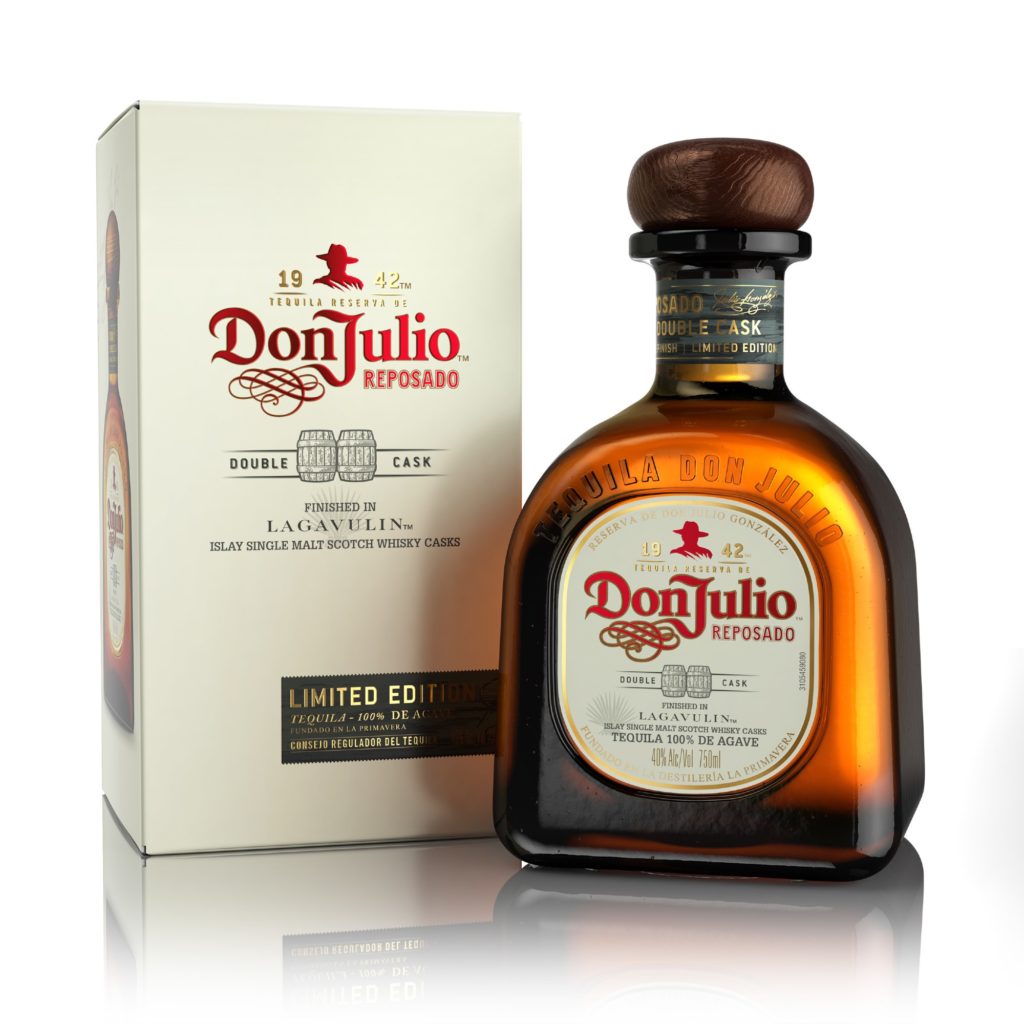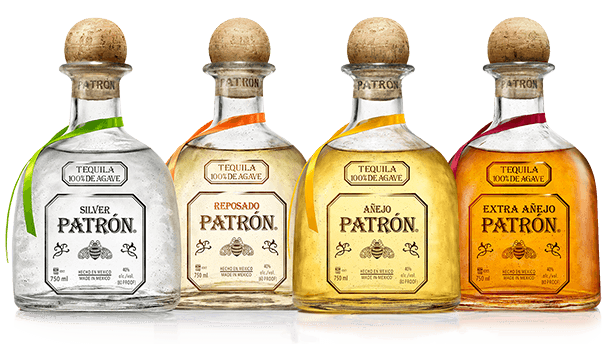We all love fantastic game-changers. But each time you scan the back of a bar for your favorite drink or take your time savoring a great margarita, you could be overlooking some of the huge game-changers in tequila, Don Julio and Patron.
At a time when tequila production focused on quantity over quality, Don Julio and Patron dared to challenge the status quo. Both companies coddled their agave, went for short bottles when everyone else went tall, and even stripped aged tequila down to crystal-clear agave bones.
We all have our drinks of choice, but not everyone can say that their favorite comes with bonus health benefits. These colorless tequilas are some of the purest liquors in the world, and therefore, supposedly, hangover-free.
Ready to become an expert in tequila?
This tequila guide will cover what makes tequila and go over some basic definitions so you can be amazed by tequila knowledge.
Here, you’ll find some recommendations for tequilas that are widely available so you can start stocking your home bar and ensure the best tequila experience for your next party or night out.
What is tequila?
Tequila is made in a specific region in Mexico, with the agave plant. Just as French law explains that champagne can only be made in the Champagne region of France using specific ingredients and methods, Mexican laws state what is and is not tequila. Over 40 countries recognize these laws through various trade agreements. According to Mexican guidelines, tequila must meet these guidelines:
- It can only be distilled from only the blue agave plant.
- It can only be produced in the state of Jalisco and limited municipalities in the states of Guanajuato, Michoacán, Nayarit, and Tamaulipas.
- The name tequila comes from the city of Tequila, which was established in 1666, though tequila was produced long before the town was born.
How tequila is made
Although wheat, grapes, and corn can be harvested a few months to a few years before being processed and distilled into alcohol, the blue agave plants used to make tequila are different. They take about ten years to grow before they’re ready to be harvested for tequila.
The difficult harvesting process is carried out by hand by agave farmers called jimadores. Below are the main steps involved in turning agave into tequila:
Harvest the Agave:
When ready to be harvested, the spiny leaves and roots are cut off the main plant body, called the agave heart or piña, which goes to processing.
Process the agave:
The hearts are slowly baked, which can sometimes take days. The slow cooking reduces caramelization and prevents the juices from turning bitter, thus maintaining the flavor of the agave.
Crushing stage:
Next, the cooked hearts are crushed to release their sugary juices. This can be done by a mechanical crusher and grinder or by the traditional way using a volcanic stone wheel called a tahona. Historically, a mule pulled the tahona, but these days an electric motor does the job. In theory, this slower practice of extracting agave nectar that will be fermented and distilled creates a more robust and complex flavor.
Fermentation process:
The extracted juices are then fermented and twice-distilled, as shown by regulations. The distilled alcohol can then be bottled straight away or aged in wooden containers.

Patron Vs. Don Julio
Don Julio Tequila
Don Julio is one of the best-known brands of tequila in the United States and around the world. This brand ranks right up there with Patron Silver as far as popularity goes. With Don Julio, there’s a story that goes well beyond trying to be different. Below are fun things you need to know about super-premium tequila, Don Julio.
Founded by a teenager named Don Julio
Most of us, at age 17, are just starting to dabble in angry poetry. But in 1942, in Jalisco, Mexico, a 17-year-old was not only financially supporting his whole family, but he was also laying the foundation for what would become the world’s first luxury tequila brand.
Just like we had a real Richard Hennessy, there was indeed a Don Julio. When Don Julio González began distilling tequila as a teenager, he didn’t have big business plans. He was simply trying to supplement a weekly income for his family.
He also just so happened to care about tequila; so at a time when it was just a workhorse drink— fiery, raw, and rough around the edges with more than enough kick to knock you head-first into sweet oblivion— Don Julio staked his future on the idea that tequila might someday be sipped, savored, and described in as much loving detail as fine whiskey.
Don Julio built the distillery on borrowed money
Most worthwhile ventures, higher education being the one soul-crushing exception, begin with a loan. When Don Julio decided he was going to introduce his exacting standards to tequila production, his first stop was at the doorstep of a local businessman, asking for a sizable loan to begin his distillery. The businessman agreed, agave hearts found their way to ovens, and Don Julio’s first tequilas were bottled.
Don Julio is ‘the Grandfather’ of super-premium drinks
Apart from the standard Don Julio introduced to the industry, which emphasized the health and character of the Blue Weber agave itself, the brand fundamentally changed the way consumers regarded tequila, laying the foundation for what we now call “super-premium.” Between 2012 and today, more than seven decades after he started distilling, sales in the super-premium tequila category have gone up 706 percent.
Don Julio’s bottle design was intentionally off-trend
During his time, tequila bottles were mainly utilitarian, lean, long, and mostly tucked under the table until someone’s drink needed topping off. They certainly were not a point of visual interest. Don Julio dared to go off-trend, creating tequila bottles that were not just short, but almost awkwardly squat. He aimed to create not just a visually distinctive bottle, but one you could keep on the table without blocking another person’s view of your drunken face.
Don Julio’s master distiller knew his chemistry
Master distiller, Enrique de Colsa, was a former industrial engineer, working in what he describes as “liquid handling,” a field that involves lots of chemical equations and the careful use of rubber gloves. Due to this, de Colsa handled things such as compressors, filters, and even bombs.
He eventually moved toward perfumes and, eventually, spirits. When he met Don Julio in 1998, he was working for a rival distiller. Don Julio immediately plucked him away and made him master distiller for the whole brand in 2004.

Patron
First created in 1989, Patron tequila is mostly linked with premium tequila as a result of its aggressive marketing in the 1990s, which branded it as a sophisticated spirit. Don Julio was co-founded by John Paul DeJoria, the namesake founder of the equally famous John Paul Mitchell hair product line.
The slow-roasted agave is processed by using half tahona-crushed agave and half modern roller-mill crushed agave before fermentation in wooden vats. A tahona is a massive stone wheel, one of the most laborious and oldest tequila-making processes.
Patron Silver is standard-bearer tequila. It is good for shots, sipping, or cocktails, but there are better options for each of these purposes. It is a jack of all trades but master of none. Try it in a blueberry margarita or pomegranate Paloma.
It has nearly no aroma. Patron Silver is clean tasting, with hints of citrus and white pepper. It has a classic tequila flavor. Some love this tequila because they grew up with it, while others find it a little bit harsh.
What to know about buying tequila
These tequilas recommended here are suggestions for widely available tequilas across many price ranges. Some good buying guidelines are:
- Avoid anything that is packaged in plastic or that costs less than $15 because these are signs of cheap tequila that’ll burn down your throat.
- Buy only tequila that has 100% agave written on the bottle.
- Find smooth, flavorful tequila that’s great for shots, cocktails, or sipping. A high price doesn’t always mean high quality.
- If there’s a worm or scorpion in the bottle, don’t buy it.




It depends on what version you’re talking about. The anejo from Don Julio? They’re extra Anejo? If that’s what you’re talking about Don Julio is better. Not that either of them are my favorite by far but if you’re looking for the cheaper stuff then Don Julio is what you want
Luv,luv, luv tequila but can’t afford high quality. Usually women make less money then men. Who wants to sit with a man just to get a high quality drink? Not me . Send me some samples and I’ll do my own taste test. , Loving You